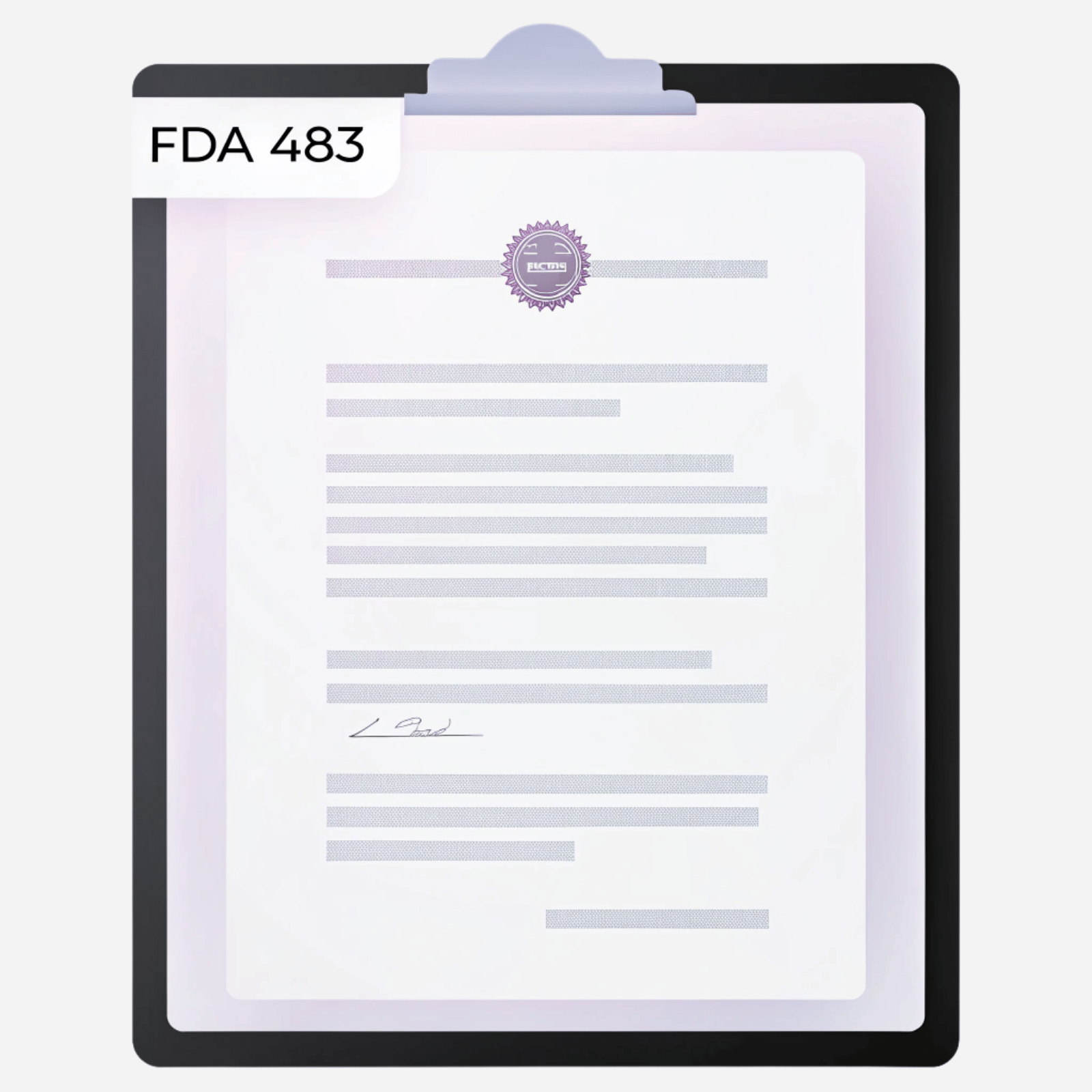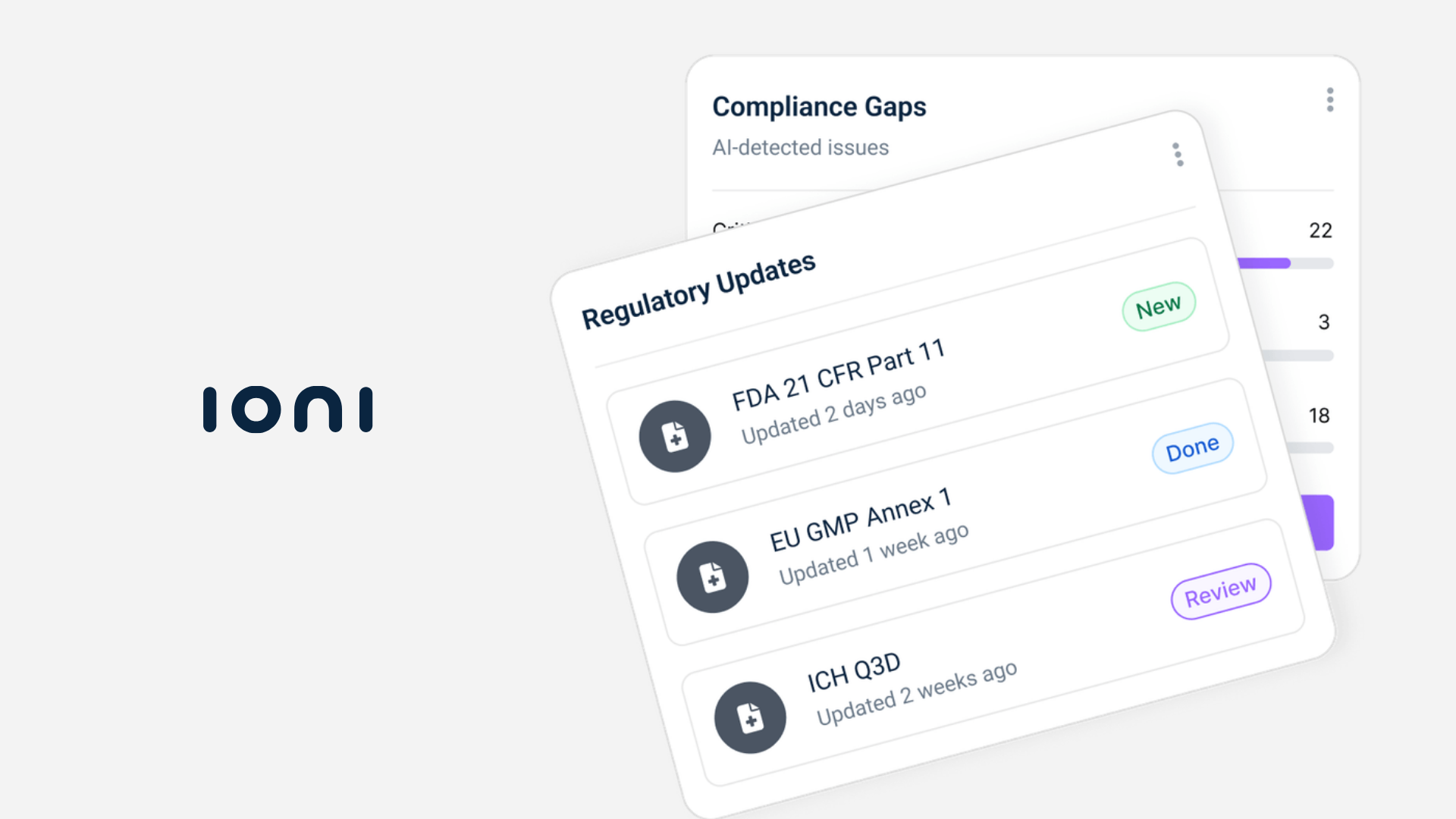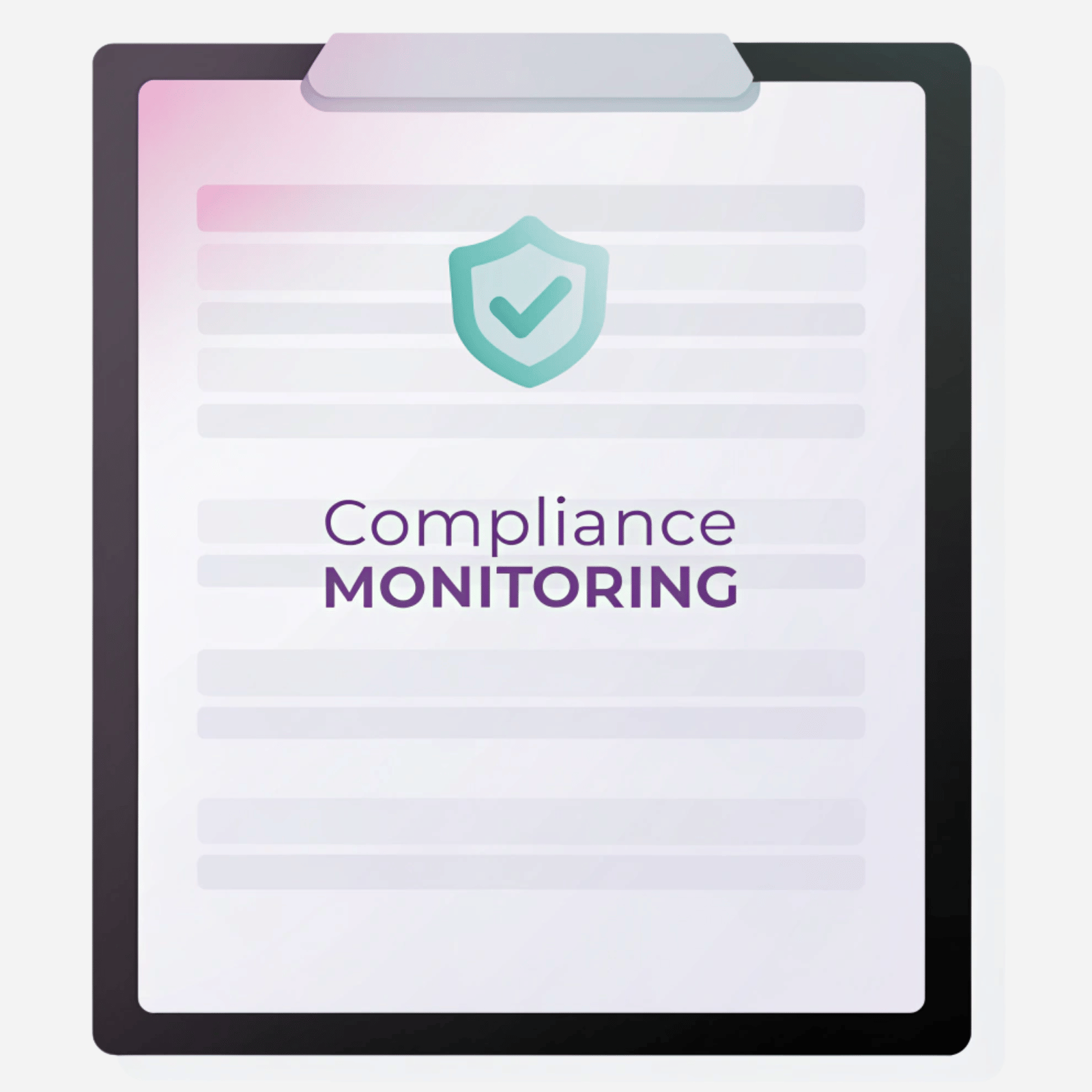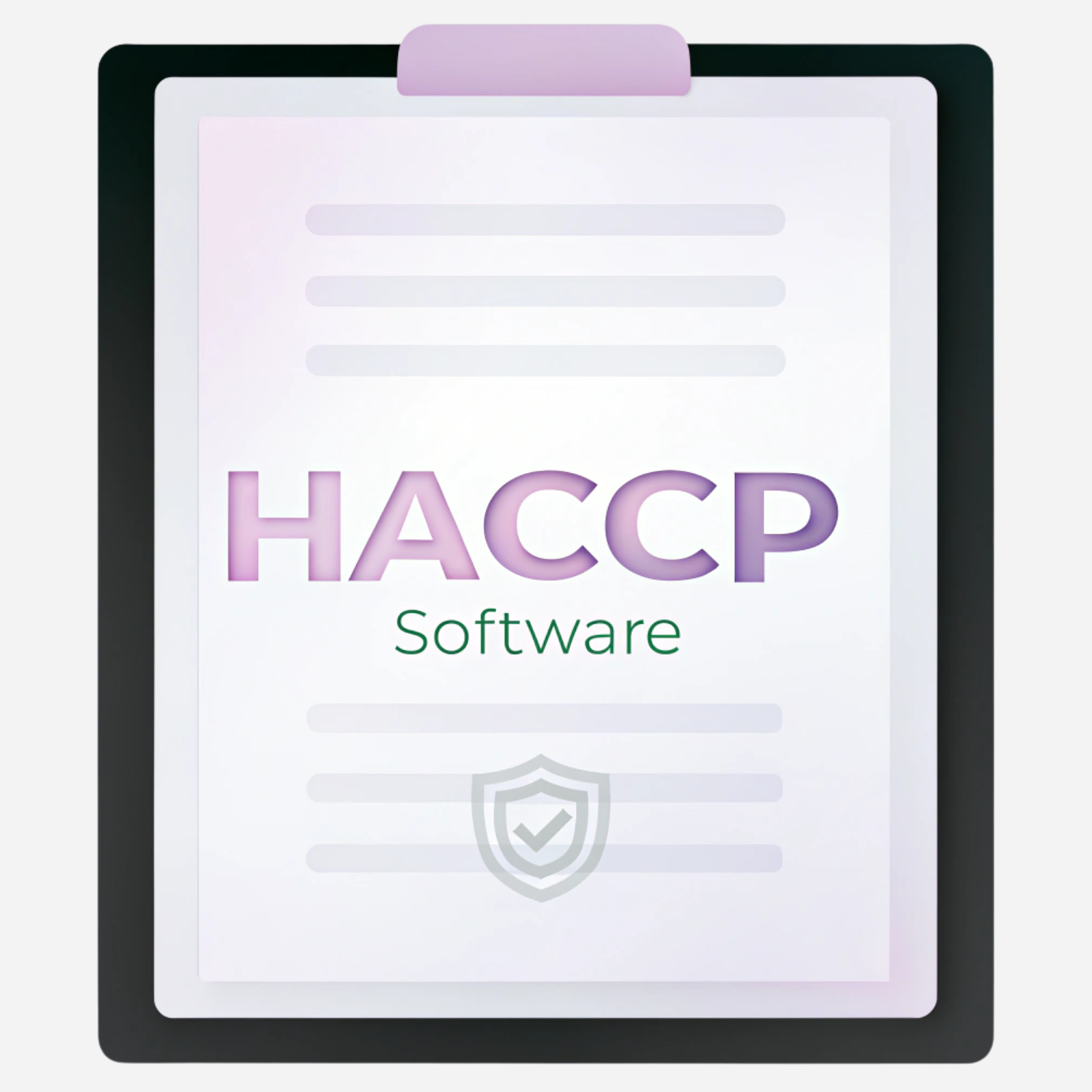
Introduction
Сompliance is a regulatory baseline and a reputational safeguard in the pharmaceutical industry. When compliance breaks down, the consequences are swift: product recalls, halted operations, import bans, and legal action. These outcomes are not hypothetical. They’re documented, year after year, in one of the FDA’s (U.S. Food and Drug Administration) most critical enforcement tools: Form 483. Let’s take a look at it deeper.
A Form FDA 483 is issued when its inspectors observe conditions that may violate the Food, Drug, and Cosmetic Act. It provides a written account of compliance issues in the pharmaceutical industry, from missing standard operating procedures to failures in cleaning, training, or validation. While not a final ruling, it is often a prelude to warning letters or more serious enforcement.
Recent FDA data reveal the scale of the problem:
- The FDA issued 779 Form 483s to drug facilities, reflecting a continued upward trend.
- After a COVID-related dip to 349 in FY 2020 and 215 in FY 2021, issuance rebounded to 561 in FY 2024.
- Analysis of multiple years found 3,362 observations on average per year, with 685 Forms 483 annually - drug-related observations representing 14–16% of total FDA observations across sectors.
The numbers tell a story. (FY = Fiscal Year.) In the Drugs category alone, the FDA issued:
- 779 Form 483s in FY 2019
- 349 in FY 2020 (COVID-19 impact)
- 215 in FY 2021
- 466 in FY 2022
- 510 in FY 2023
- 561 in FY 2024
A detailed analysis of FY 2024 Form 483 inspectional observations revealed that deficiencies in stability programs - governed by 21 CFR §211.166 - continue to be a significant compliance gap. Of the 561 Forms 483 issued in the Drugs sector, 96 (17%) cited stability issues - proving that nearly one in five inspections featured failures in this domain. This marks a slight increase from FY 2023.
Common findings included:
- No written stability testing program (47 instances)
- Stability programs are not followed consistently
- Invalid test methods, inadequate sample/storage design, or missing long-term data
Understanding these recurring gaps, such as documentation failures, validation deficiencies, and investigation weaknesses, offers insight not just into reasons for a Form 483, but into how to prevent one. Reviewing actual FDA 483 examples makes it clear: these are not obscure or edge-case failures. They’re often the result of systemic oversight or slow adaptation to changing requirements.
In this article, we will break down the most common pharmaceutical compliance issues that lead to Form 483 citations. It links each to the applicable regulation in 21 CFR Part 211, and outlines how better visibility, process control, and regulatory intelligence can reduce the risk of inspectional observations.
Whether you’re overseeing QA, regulatory affairs, or operations, the patterns are worth your attention because the numbers tell a story no company can afford to ignore.
Top Compliance Issues in the Pharmaceutical Industry
While the numbers highlight the scale of the problem, they reveal only part of the story. To truly understand the risk landscape, it’s essential to examine the specific compliance issues in the pharmaceutical industry that most frequently appear in regulatory reports. The FDA 483 list, year after year, points to a consistent set of failures - not rare oversights, but foundational lapses that span documentation, validation, investigation, and control systems.
By analyzing the most cited sections of Form 483s and reviewing real FDA 483 examples, a pattern emerges. These are not isolated technical errors; they are system-level weaknesses that expose firms to serious regulatory consequences. What follows is a breakdown of the most frequent pharmaceutical compliance issues - each tied directly to the reasons for a Form 483, and supported by regulatory citations from 21 CFR Part 211.
Understanding these recurring problem areas is a critical step in shifting from reactive correction to proactive prevention.
#1 Inadequate Standard Operating Procedures (SOPs)
Regulations:
- 21 CFR § 211.22(d) - Quality control unit procedures
- 21 CFR § 211.100(a) - Written production/process control
When SOPs are missing, outdated, or unenforced, they become a root cause of recurring compliance issues in the pharmaceutical industry. This is a leading culprit behind formal observations in the FDA 483 list.
Regulatory Text Excerpts
21 CFR § 211.22(d):
“The responsibilities and procedures applicable to the quality control unit shall be in writing; such written procedures shall be followed.”
This provision makes clear that the quality control unit must have documented responsibilities and must follow them.
21 CFR § 211.100(a):
“There shall be written procedures for production and process control designed to assure that the drug products have the identity, strength, quality, and purity they purport or are represented to possess. … These written procedures, including any changes, shall be drafted, reviewed, and approved … and reviewed and approved by the quality control unit.”
The rule further emphasizes that written procedures must cover all production and control processes, be approved, and be followed - without deviation unless documented.
How This Shows Up in FDA 483 Observations
The reasons for a Form 483 frequently include citations linked to §§ 211.22(d) and 211.100(a) - often worded as:
- “Quality unit responsibilities are not documented, or SOPs are not followed in routine operations.”
- “Written production/process control procedures are absent, incomplete, or not properly implemented.”
Such failures are among the top pharmaceutical compliance issues cited in real-world FDA 483 examples, particularly in warning letters and inspection reports. For example, forms often note that SOPs existed in an electronic system, but weren’t accessible in key processing or QC areas - a deliverable shortcoming.
Consequences and Risk Exposure
When SOPs are missing or not enforced:
- Critical tasks may be done inconsistently, increasing the risk of batch failures or mix-ups.
- Inspectors interpret such gaps as systemic deficiencies, leading to higher scrutiny across the FDA 483 list.
- The absence of oversight in the quality control unit raises multiple potential violations - in effect reflecting poor organizational governance.
In short, inadequate SOP structure is a predictable cause for Form 483 issuance and among the most persistent compliance issues in the pharmaceutical industry. This is why many companies see repeat findings tied to similar root causes across inspections.
#2 Documentation & Data Integrity Failures
Regulations:
- 21 CFR § 211.68 - Returned drug products
- 21 CFR § 211.188 - Batch production and control records
- 21 CFR § 211.194 - Laboratory records
Documentation accuracy and integrity are the backbone of pharmaceutical manufacturing oversight. Failures in this domain represent some of the most frequent and critical pharmaceutical compliance issues cited in the FDA 483 list and are leading reasons for a Form 483.
Regulatory Text Excerpts
21 CFR § 211.188(a):
“Complete batch production and control records shall be prepared for each batch of drug product produced and shall include: all calculations, all sampling data, all records of the tests performed, the results thereof, and the individual signatures of the persons performing and supervising these tasks.”
This requirement ensures that all manufacturing steps and test results are fully documented with traceability to personnel.
21 CFR § 211.194(a):
“Laboratory records shall include complete data derived from all tests necessary to assure compliance with established specifications and standards, including examinations and assays, and the individual responsible for performing the test.”
Laboratory records must be comprehensive and accurate, underpinning the validity of product release decisions.
21 CFR § 211.68:
“Returned drug products shall be thoroughly examined, tested, and, where appropriate, reprocessed according to established written procedures.”
Although focused on returned products, this section underscores the need for documented control throughout the product lifecycle.
Common Failures in FDA 483 Observations
The FDA 483 list frequently highlights deficiencies such as:
- Incomplete batch records: Missing signatures, data gaps, or unrecorded manufacturing steps.
- Data alterations without justification: Unauthorized changes, backdated entries, or inconsistent corrections.
- Electronic record issues: Lack of audit trails, poor data security, or non-compliance with 21 CFR Part 11 requirements.
Such documentation and data integrity failures undermine trust in quality systems and are among the most cited compliance issues in the pharmaceutical industry. For example, one prominent FDA 483 example involved missing raw data supporting batch release, leading to product hold and extended regulatory scrutiny.
Regulatory and Operational Impact
- Failures to maintain comprehensive, accurate documentation:
- Jeopardize batch release decisions and product quality assurance.
- Trigger FDA inspectional observations, often with a focus on data integrity.
- Can lead to enforcement actions, including warning letters and product recalls.
The FDA 483 list consistently reflects the critical nature of data integrity - showing it is a fundamental pillar of pharmaceutical quality management.
#3 Ineffective CAPA and Root Cause Investigations
Regulation:
- 21 CFR § 211.192 - Investigations of discrepancies
The inability to properly investigate deviations and implement corrective actions remains one of the most pervasive pharmaceutical compliance issues documented in the FDA 483 list. Weaknesses in the Corrective and Preventive Action (CAPA) process often translate directly into repeated nonconformities, inspectional observations, and regulatory enforcement.
Regulatory Text Excerpt
21 CFR § 211.192:
“Written procedures shall be established and followed for investigating any unexplained discrepancy … and for failure of a batch or any of its components to meet any of its specifications. Such investigations shall extend to other batches of the same drug product and other drug products that may have been associated with the specific failure or discrepancy. The investigation and follow-up shall be documented.”
This regulation demands a thorough, documented investigation of deviations, emphasizing that investigations must consider potential impacts on other batches or products.
Common CAPA Failures in FDA 483 Observations
The reasons for a Form 483 commonly include:
- Uninvestigated or superficially investigated deviations, where root causes remain undetermined.
- Recurring failures without effective corrective measures indicate systemic issues remain unaddressed.
- Weak CAPA tracking and documentation, leading to incomplete or missing follow-up actions.
Such failings undermine quality oversight and suggest organizational complacency. For example, an FDA 483 might note:
“Failure to conduct adequate investigations into out-of-specification results, and failure to assess potential impacts on related batches,” reflecting a gap in adherence to 21 CFR § 211.192.
Why CAPA Effectiveness Matters
Without robust root cause analysis and corrective action:
- The same quality failures repeat, increasing risk to patients and business continuity.
- FDA inspectors identify these as systemic, management-level failures, increasing enforcement severity.
- The FDA 483 list frequently flags these issues, making them a persistent regulatory blind spot for many pharmaceutical manufacturers.
Addressing these challenges requires rigorous documentation and a culture of accountability and continuous improvement - a cornerstone of modern quality management systems.
#4 Insufficient Employee Training Records
Regulation:
- 21 CFR § 211.25(a) - Personnel Qualifications
Human error remains a leading contributor to compliance issues in the pharmaceutical industry, often tracing back to insufficient training programs and undocumented qualifications. FDA inspectors routinely cite firms on the FDA 483 list for failing to ensure that employees responsible for GMP activities are appropriately trained and qualified.
Regulatory Text Excerpt
21 CFR § 211.25(a):
“Each person engaged in the manufacture, processing, packing, or holding of a drug product shall have education, training, and experience, or any combination thereof, to enable that person to perform the assigned functions. Training shall be in the particular operations that the employee performs and in current good manufacturing practice (including the current regulations in this part) as they relate to the employee’s functions.”
The regulation places responsibility on manufacturers to ensure all GMP-relevant personnel are not only properly trained but that training is appropriate to their specific responsibilities.
Common Training Deficiencies Cited in FDA 483s
FDA inspectors often flag the following pharmaceutical compliance issues:
- No documented evidence of GMP training for employees involved in manufacturing or quality operations.
- Personnel performing tasks without required qualifications, particularly in quality control labs or sterile manufacturing.
- Training records are not updated, failing to reflect ongoing or role-specific instruction.
These issues appear repeatedly in FDA 483 examples, where inspectors often state:
- “Failure to ensure that employees have been adequately trained in cGMPs and are qualified for the operations they perform,”
illustrating how training gaps correlate with broader GMP failures. (FDA 483 list sample)
Training Failures Are Not Minor Lapses
Gaps in employee training are seen by regulators as indicators of weak quality culture. The lack of training documentation not only violates 21 CFR § 211.25(a), but also:
- Undermines product integrity and patient safety.
- Increases the risk of procedural errors and data integrity violations.
- Triggers regulatory consequences, often escalating beyond a Form 483 to warning letters or consent decrees if unresolved.
Training records serve as a tangible measure of operational control - and the absence of them is a serious reason for a Form 483 during GMP inspections.
#5 Validation Gaps in Processes and Equipment
Regulations:
- 21 CFR § 211.100(a) - Written procedures for production/process control
- 21 CFR § 211.63 - Equipment design, size, suitability
- 21 CFR § 211.110(a) - Sampling and in-process control procedures
A critical source of pharmaceutical compliance issues lies in the failure to adequately validate manufacturing processes and qualify equipment. The FDA expects firms to demonstrate, with scientific evidence, that their processes consistently yield products meeting specifications.
When validation data is missing or outdated, or equipment lacks qualification records, firms quickly land on the FDA 483 list.
Regulatory Text Excerpts
21 CFR § 211.100(a):
“There shall be written procedures for production and process control designed to assure that the drug products have the identity, strength, quality, and purity they purport or are represented to possess.”
21 CFR § 211.63:
“Equipment used in the manufacture, processing, packing, or holding of a drug product shall be of appropriate design, adequate size, and suitably located to facilitate operations for its intended use.”
21 CFR § 211.110(a):
“To assure batch uniformity and integrity of drug products, written procedures shall be established and followed that describe the in-process controls, and tests... Such control procedures shall be established to monitor the output and to validate the performance of those manufacturing processes...”
Typical Validation Issues Cited in FDA 483 Examples
- Lack of process validation protocols or incomplete data sets supporting commercial manufacturing.
- Equipment used without documented qualification (IQ/OQ/PQ) or with outdated calibration records.
- Changes to critical processes were made without re-validation, leading to inconsistent product quality.
- Inadequate monitoring of process parameters, especially during scale-up or tech transfer.
In one notable FDA 483 example, investigators noted:
- “Your firm failed to adequately validate its tableting process, and equipment calibration records were incomplete or missing.”
These types of violations highlight clear reasons for a Form 483 and often lead to follow-up inspections or enforcement if remediation isn't immediate and thorough.
Why Validation Matters
Process and equipment validation are foundational pillars of pharmaceutical manufacturing. When these controls are weak or missing:
- The risk of batch failures, product recalls, or patient harm escalates.
- Regulatory bodies view it as a systemic quality failure rather than a technical oversight.
- The company’s entire quality system may come under question.
Proper validation is not optional - it’s a regulatory expectation, a GMP cornerstone, and a common focus in FDA 483 inspections involving compliance issues in the pharmaceutical industry.
#6 Contamination & Cleaning Control Weaknesses
Regulations:
21 CFR § 211.67 - Equipment Cleaning and Maintenance
21 CFR § 211.113(b) - Control of Microbiological Contamination
Among the most serious compliance issues in the pharmaceutical industry are failures to prevent contamination. Whether microbial or cross-contamination, these lapses pose a direct threat to patient safety and are frequently cited on the FDA 483 list during drug manufacturing inspections.
Regulatory Text Excerpts
21 CFR § 211.67(a):
“Equipment and utensils shall be cleaned, maintained, and sanitized at appropriate intervals to prevent malfunctions or contamination that would alter the safety, identity, strength, quality, or purity of the drug product.”
21 CFR § 211.113(b):
“Appropriate written procedures, designed to prevent microbiological contamination of drug products purporting to be sterile, shall be established and followed. Such procedures shall include validation of all aseptic and sterilization processes.”
Frequent Contamination-Related Issues in FDA 483 Examples
Inspection reports frequently list the following pharmaceutical compliance issues:
- Inadequate cleaning validation, especially for shared equipment.
- Absence of documented cleaning procedures or failure to follow established ones.
- Use of non-dedicated equipment without proper controls increases the risk of cross-contamination.
- Poor aseptic technique or environmental monitoring in sterile areas.
- Contaminated or unqualified cleanrooms failing to meet ISO classifications.
From a real FDA 483 example, an inspector noted:
- “You failed to validate cleaning procedures for equipment used in manufacturing multiple drug products, raising the risk of carryover contamination.”
These kinds of issues are clear reasons for a Form 483, particularly in sterile or high-risk manufacturing environments.
Why Cleaning & Contamination Control Cannot Be Compromised
Uncontrolled contamination not only leads to batch rejections and recalls but can cause direct harm to patients. Regulators interpret weaknesses in this area as indicators of deep systemic failures in the company’s GMP program. Observations here are rarely isolated - they often point to broader gaps in validation, training, documentation, and quality oversight.
Contamination-related findings are among the most cited issues across the FDA 483 list, and a significant portion of compliance issues in the pharmaceutical industry stem from cleaning validation or microbiological control failures.
#7 Equipment & Facility Maintenance Deficiencies
Regulations:
- 21 CFR § 211.42 - Design and Construction Features
- 21 CFR § 211.63 - Equipment Design, Size, and Location
- 21 CFR § 211.67 - Equipment Cleaning and Maintenance
Failure to properly design, maintain, and control pharmaceutical manufacturing environments is one of the most persistent compliance issues in the pharmaceutical industry. Regulatory inspections routinely uncover physical infrastructure problems - ranging from damaged equipment and inadequate HVAC systems to poor environmental controls - that directly compromise product quality and safety.
Regulatory Text Excerpts
21 CFR § 211.42(b):
“The flow of components, drug product containers, closures, labeling, in-process materials, and drug products through the building or buildings shall be designed to prevent contamination.”
21 CFR § 211.63:
“Equipment used in the manufacture, processing, packing, or holding of a drug product shall be of appropriate design, adequate size, and suitably located to facilitate operations for its intended use.”
21 CFR § 211.67(a):
“Equipment and utensils shall be cleaned, maintained, and sanitized at appropriate intervals to prevent malfunctions or contamination…”
Common Maintenance-Related Observations in FDA 483 Examples
The FDA 483 list often includes citations for:
- Broken or corroded equipment is still in use during production.
- Failure to establish a preventive maintenance program, or lack of records proving maintenance was performed.
- Inadequate air handling systems, especially in controlled or sterile areas.
- Poor facility hygiene, including flaking paint, water leaks, or unsealed flooring.
- Environmental monitoring systems are not functioning or are not validated.
In one FDA 483 example, an inspector stated:
- “Air handling units servicing aseptic areas were not adequately maintained, and no documentation was available to support their calibration or filtration performance.”
These findings are typical reasons for a Form 483, especially in older facilities or those with deferred capital investments. Facility and equipment maintenance is often perceived as a cost center - until a compliance failure makes it a legal and reputational liability.
Why It Matters
Facility and equipment integrity is not optional - it’s embedded in the core of Good Manufacturing Practice. Pharmaceutical compliance issues in this category often signal management neglect, underinvestment, or poor operational oversight. When the physical environment is compromised, no amount of documentation can fully mitigate the risk to product safety.
For regulators, these deficiencies are highly visible - and difficult to justify. They often contribute to broader citations during inspections and are closely examined during consent decree negotiations or warning letter reviews.
The Role of AI Regulatory Intelligence in Addressing Compliance Risks
Even with robust SOPs and a well-trained workforce, many manufacturers continue to face recurring pharmaceutical compliance issues - not due to negligence, but because of information overload and regulatory fragmentation.
The pharmaceutical regulatory landscape evolves continuously, yet many organizations still rely on outdated manual methods to track and respond to these changes. This regulatory lag is one of the more insidious reasons for a Form 483, particularly when non-compliance is traced back to obsolete or overlooked requirements.
From environmental monitoring thresholds to data integrity controls, even subtle FDA guidance updates can trigger inspection findings if not integrated promptly into internal quality systems. Unfortunately, industry blind spots in monitoring these evolving standards persist.
“The quality control unit shall be responsible for approving or rejecting all procedures or specifications impacting the identity, strength, quality, and purity of the drug product.” - 21 CFR § 211.22(c)
In practice, this responsibility becomes unmanageable when quality teams must monitor hundreds of changing regulations across jurisdictions. As seen in multiple FDA 483 examples, failure to align SOPs with the latest requirements - even unintentionally - can result in significant citations.
How AI Automation Tools Like IONI Help Maintain Compliance Readiness
Instead of relying on fragmented spreadsheets or static regulatory binders, AI-powered systems continuously scan and interpret global updates: from the FDA, EMA, MHRA, and others. IONI proactively maps changes against a manufacturer’s internal quality documentation and alerts teams to emerging gaps. This dynamic approach helps resolve one of the most critical compliance issues in the pharmaceutical industry: reacting too slowly to changes that are already enforceable.
Unlike traditional manual tracking - which is reactive and error-prone - IONI enables:
- Automated surveillance of evolving regulatory requirements (horizontal scanning).
- Instant mapping of changes to internal SOPs and controls.
- Configurable alerts tied to roles and responsibilities.
- Audit-ready documentation trails, reinforcing inspection preparedness.
By integrating systems like IONI, companies can preempt FDA 483 list findings linked to outdated processes or missing documentation - common triggers that have historically resulted in repeat citations. This technology transforms regulatory intelligence from a passive, clerical task into a strategic compliance function.

Ready to Close Your Regulatory Blind Spots?
Start proactively managing your regulatory risk before it shows up in an inspection. Schedule a demo with IONI and see how AI-driven compliance tools can keep your quality systems ahead of every regulatory update.
Preventive Strategies for Staying Compliant
AI tools may close the intelligence gap, but sustainable compliance requires operational discipline across the board. Technology supports the process - but it cannot substitute for a well-integrated quality management system (QMS), consistent internal audits, and a culture of accountability. The most frequently cited reasons for a Form 483 still point to preventable oversights, particularly in documentation, training, and deviation management.
A review of the FDA 483 list over the past five years confirms that even firms with advanced systems face repeat citations when QMS elements fail to align with day-to-day execution. True resilience comes from a layered approach that integrates digital oversight with procedural rigor.
“There shall be written procedures for production and process control designed to assure that the drug products have the identity, strength, quality, and purity they purport or are represented to possess.” - 21 CFR § 211.100(a)
This provision has become a cornerstone in pharmaceutical compliance issues related to validation, batch record errors, and inadequate investigation of failures. Proactive compliance strategies are the only realistic path to reducing regulatory exposure.
Building a Prevention-First Compliance Culture
To mitigate the most common compliance issues in the pharmaceutical industry, manufacturers should implement the following strategies:
- Regular Internal Audits: Identify weak points before inspectors do. Audits should be risk-based, documented, and include corrective follow-ups. Internal findings should map to known FDA 483 examples and guidance trends.
- QMS Integration & Accountability: Ensure all quality subsystems (deviations, CAPA, change control, training) are fully connected. Siloed systems often lead to repeated non-conformities.
- Digital Traceability: Transition from paper-heavy systems to validate electronic platforms for training, batch records, and investigations. This enhances data integrity and speeds audit readiness.
- Proactive Monitoring of Global Regulations: Leverage tools or services to stay ahead of changes from the FDA, EMA, WHO, and others. Many pharmaceutical compliance issues stem from outdated internal procedures that no longer meet the latest expectations.
“Laboratory records shall include complete data derived from all tests necessary to assure compliance with established specifications and standards…” - 21 CFR § 211.194(a)
In today's regulatory environment, reactive compliance is no longer viable. With increasing FDA scrutiny and rising numbers of 483s issued annually, the margin for error is shrinking.
Pharmaceutical Compliance Checklist: Are You Audit-Ready?
Use this list to assess whether your organization is protected from the most common compliance issues in the pharmaceutical industry - and avoid ending up on the next FDA 483 list.
- SOP Accuracy & Enforcement: Ensure all standard operating procedures are up to date, enforced consistently, and aligned with 21 CFR § 211.22(d) and § 211.100(a). Missing or outdated SOPs remain one of the top reasons for a Form 483.
- Complete and Tamper-Proof Documentation: Batch records and lab data must be complete, accurate, and traceable. Failures in data integrity and missing documentation are frequent FDA 483 examples, often linked to § 211.188 and § 211.194.
- Effective CAPA and Root Cause Analysis: Every deviation must be investigated thoroughly with documented corrective actions. Weak CAPA systems frequently lead to repeat citations under § 211.192.
- Documented GMP Training: All personnel involved in manufacturing must be qualified and have documented training per § 211.25(a). Untrained staff is a persistent pharmaceutical compliance issue.
- Process and Equipment Validation: Processes must be validated, and equipment qualified to function within approved parameters, as required by § 211.63 and § 211.100(a).
- Cleaning and Contamination Control: Preventive cleaning protocols and contamination control - especially in aseptic environments - are essential. Non-compliance with § 211.67 or § 211.113(b) frequently results in 483s.
- Facility and Equipment Maintenance: Maintenance logs must be current, and environmental controls must be regularly verified. Deficiencies here are often cited under § 211.42 and § 211.63.
Even a single gap in these areas can trigger regulatory action. If these issues sound familiar, you're not alone - they dominate the FDA 483 list year after year.
Conclusion: Building a Culture of Continuous Compliance
Sustained success in pharmaceutical manufacturing hinges on reacting to regulatory findings and on embedding compliance into every operational layer. Persistent compliance issues in the pharmaceutical industry, as documented in the extensive FDA 483 list, often arise from systemic weaknesses - gaps in training, documentation, process controls, and regulatory intelligence.
The FDA underscores the critical role of quality oversight in 21 CFR § 211.22(c):
“The quality control unit shall have the responsibility and authority to approve or reject all procedures or specifications impacting the identity, strength, quality, and purity of the drug product.”
This statement crystallizes the essence of robust compliance: quality cannot be delegated or siloed. Instead, it must permeate the entire organization’s culture and processes.
Analyzing frequent reasons for a Form 483 and FDA 483 examples reveals that many violations stem not from intentional misconduct but from inadequate systems and failure to anticipate evolving regulatory expectations. Embracing a proactive, technology-enabled approach - like leveraging AI-powered regulatory intelligence - paired with disciplined internal controls and continuous training forms the foundation for minimizing inspectional risk.
Pharmaceutical companies that cultivate a culture prioritizing continuous compliance reduce the likelihood of citations and enhance patient safety and trust. Ultimately, compliance is a dynamic journey requiring vigilance, investment, and a commitment to excellence at every level.









